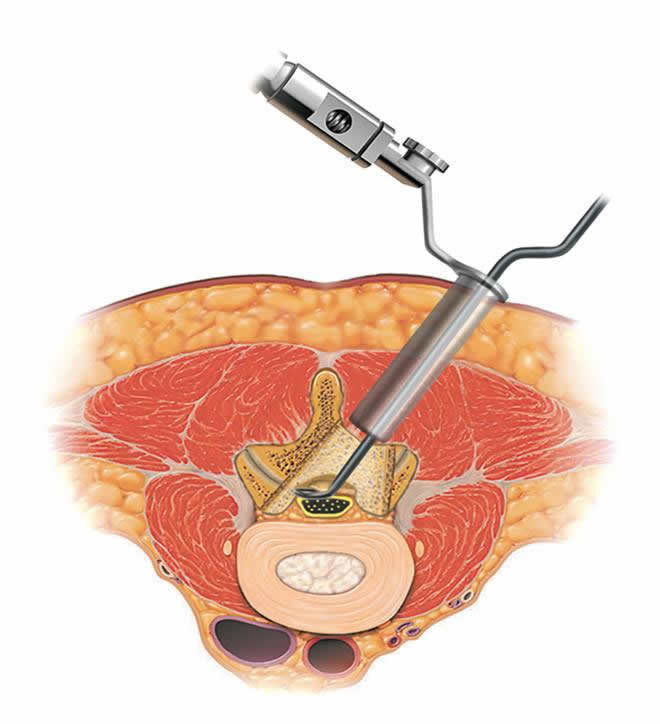 Book Appointment
Book Appointment
 +91 77740 40002
+91 77740 40002
Minimally Invasive Lumbar Decompression Treatment is a procedure in which the target of lumbar decompression surgery is achieved with minimal collateral tissue trauma. In Minimally Invasive Lumbar Decompression special technique, nerve roots at both the sides of the spine can be decompressed by making single-sided keyhole entry in the lamina.
Lumbar stenosis is a condition caused by in narrowing of the spine. It is due to arthritis, bone spur formation, thickening of the spinal ligaments and possibly bulging of the spinal discs, which is more common at old age. It might occasionally occur even in young if there is a genetic factor. It can cause symptoms such as back pain and sciatica, which results in pain in a leg, possibly with weakness, numbness and prickling. Sciatica is also known as radiculopathy, is caused by pinching of a nerve in the back. Most commonly, Lumbar spinal stenosis causes neurogenic claudication, a condition that causes pain, weakness, and or numbness with standing or walking. Typically, this condition is relieved by flexing the back, sitting or lying down. Standing straight is often difficult and patients may stand slightly bent over and may walk further with some support. MRI is done for the diagnosis. Minimally invasive surgery is often an option if surgery is required to treat this condition.

In Minimally Invasive Lumbar Decompression treatment procedure patient is positioned face-down on the operation table. Fluoroscopy is done by surgeon to confirm the right location of the incision by using an intraoperative X-ray. An incision of length about an inch is done on one side of the mid of the back at the surgical level. Dilators are placed one by one to split the muscle down to the lamina, the back part of the spine. Then a retractor is placed to hold the muscle tissue back to access to the spine for surgery. Surgeon removes overlying soft tissue by viewing through a microscope and the bone is exposed. After that bone spurs and the lamina on the side of the approach are removed. This technique is known as a lumbar laminectomy or lumbar decompression. The spinous mechanism is then undercut after tilting the table. The frontal part of the lamina on the farther side may then be removed. Special biting tools are used to open and cut the ligament underneath the bone. The disc can also be checked.
Advantages of doing Minimally Invasive Lumbar Decompression treatment over the traditional open approach are
By Minimally Invasive Lumbar Decompression Treatment, we can avoid spinal fusion in a large number of patients which mean we can preserve the natural mobility and dynamics of the spine while achieving the preset goal of decompressing the spinal nerves.
Traditional open back surgery can be beneficial for patients with scar tissue from prior surgeries, spinal deformities, or excessive obesity.